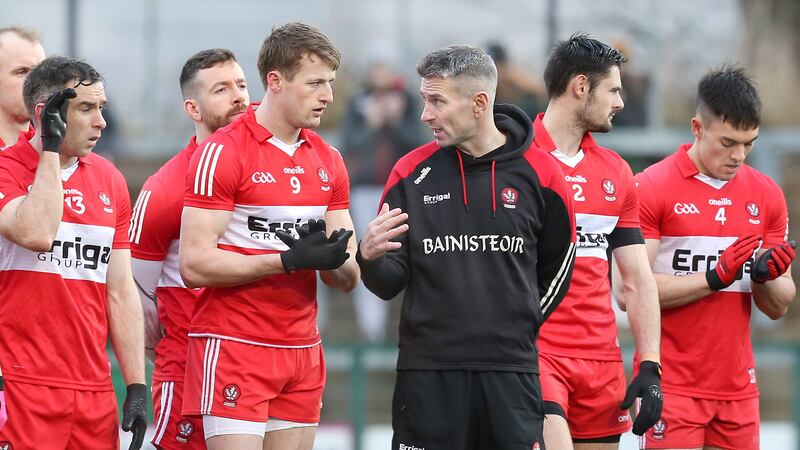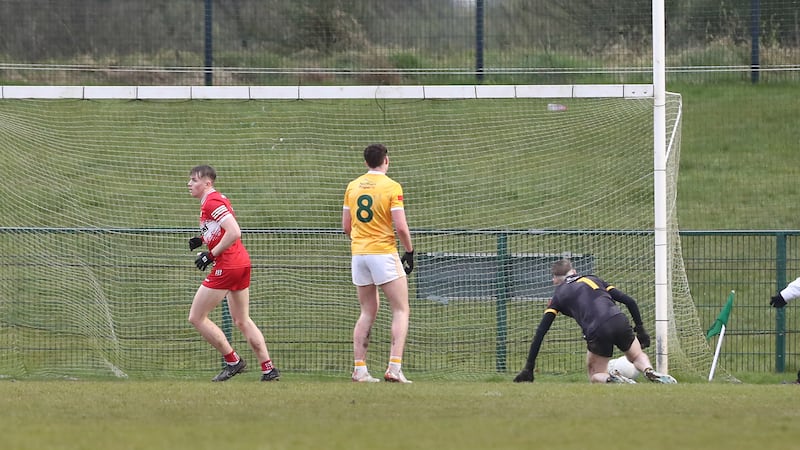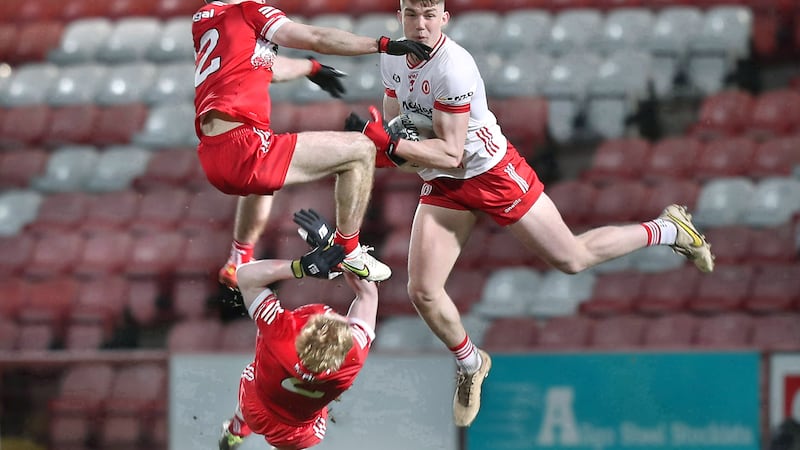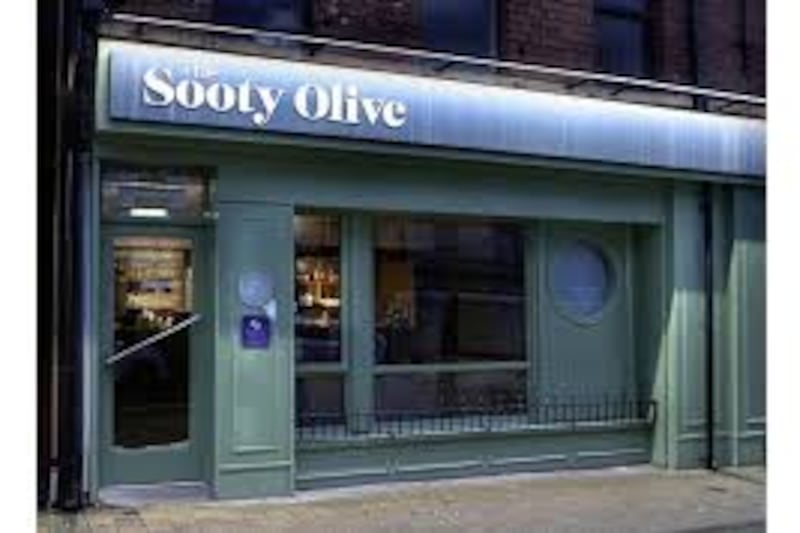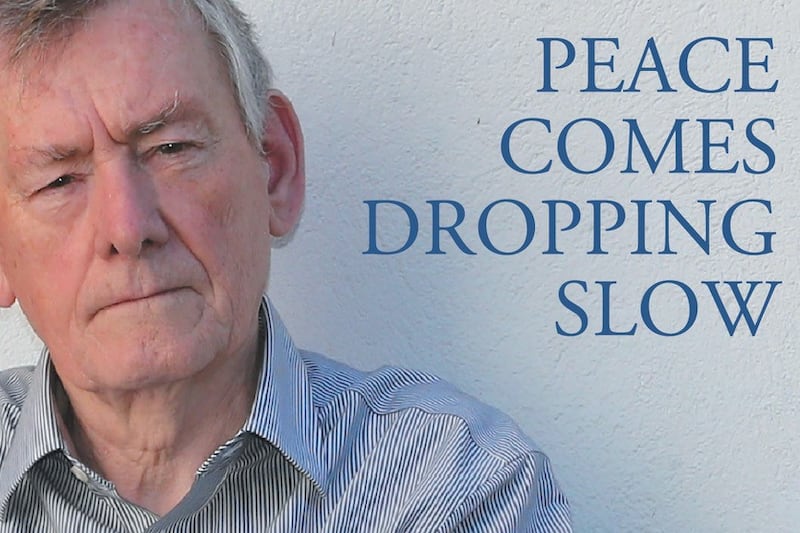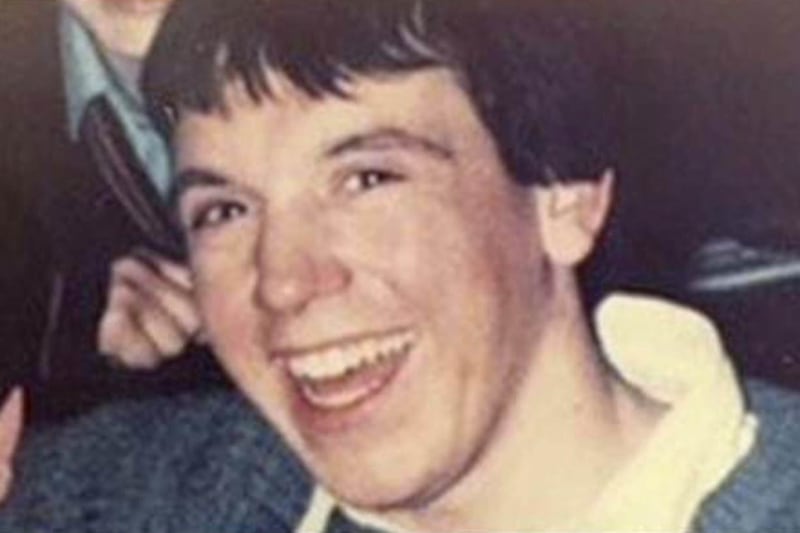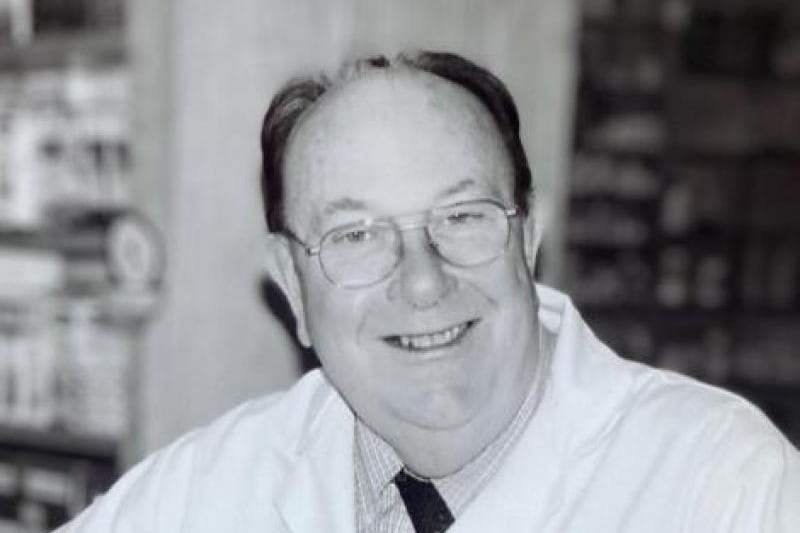TOO good a footballer to play at full-back, too good a full-back to let be a footballer.
Welcome to the warped world in which Brendan Rogers was too long a resident.
The number three tattooed to his long back suited him initially but the deeper he’s gotten into his 20s, the more tethered the ties to his own square have become.
It did take him time to develop into that footballer who’d someday step into the expanding foam of swarming bodies behind half-back lines and have the composure and ability to kick winning points in big games against Dublin and Donegal.
When he slipped the first last-minute tackle against the Dubs in Celtic Park, there were seven more defenders and very little support in the vicinity.
His skillset has developed over time to allow for that.
Rogers unveiled his defensive patent in his first championship start for Slaughtneil in 2014.
With current Derry coach Ciaran Meenagh in opposition on the line, he blotted out Benny Heron. Very few defenders in Derry did that, never mind a 20-year-old debutant.
Slaughtneil won only a second ever Derry title and a first Ulster that year, going on to reach the first of two All-Ireland finals.
His defensive skills became quickly evident. The telescopic reach of his arms that attacked every ball with aggression and directed forwards down blind alleys would bring you more to mind of a defensive point-guard.
Athletically, he was always gifted. When he was U10, Pat Purvis tried to curb his tendency to try and solo the whole field by putting him in nets. It didn’t curtail him one bit.
At Owenbeg now, the one-two-three order for sprints rarely changes. Conor McCluskey, Brendan Rogers, Ethan Doherty.
At his very max, Rogers will cover nine metres per second.
But there’s no bad diesel in him. Everything he does is done at three-quarter pace at worst.
Rory Gallagher isn’t a huge man for the GPS. He tells Derry’s players that their brain is their GPS. That running is no use unless you know where and when to run.
Still, if you're gonna try and put brains into something, you might as well put them in a gazelle.
At no point prior to last year would you have felt Derry were in a position to free him up.
Gallagher hinted earlier this year that he’d have removed the handcuffs sooner only for Eoin McEvoy’s injuries last year preventing it.
Even though he and McKaigue missed the league final, the obvious temptation to revert to Rogers at full-back was resisted. Conor Doherty instead lined up in the unfamiliar role against Dean Rock.
It changed through the day but it was never Brendan Rogers.
The tattoo, seemingly so permanent, has been removed.
The first clear sign of this was last year's Ulster final. They felt that he could play on Michael Murphy’s refusal to let others do his work.
Just as against Dublin in the spring, Rogers kicked what was effectively the winner deep into the second period of extra-time. He set up Conor Glass later still to push Derry into their two-point winning margin.
The Glass-Rogers partnership was first seen in Croke Park for last year’s All-Ireland quarter-final. They ravaged Clare built on that midfield pairing.
But Galway had too many threats needing pinned down. Derry didn’t have the depth of options to cope with Comer, Walsh and Finnerty, so Rogers was restored to full-back.
Ten minutes in, an Allstar was in his back pocket. Rogers had kicked the first two points of an All-Ireland semi-final from full-back and Damien Comer was getting it in the ear about his workrate from McKaigue and Gallagher.
But Comer finished with 2-2, the second goal into an empty net with Rogers the only Derry man, goalkeeper included, within 70 yards of their own goal.
And so Rogers lost his Allstar partly on that, and partly on not knowing where best to argue his case. In the end the jury tried him at full-back rather than midfield, and found the Comer evidence to place enough reasonable doubt on his name.
Derry will have taken as much out of the good first half against Dublin as the bad second. When his venom for the U20 mess had cooled, Gallagher got to talking about his new midfield pairing.
“One of the big pluses for ourselves is that we have a midfield that’s the real deal. In the first half the two of them were outstanding,” said the Derry boss.
Rogers did so well in the air but the big compliment was how Dublin treated him in open play.
He’d run the legs off Brian Fenton in Celtic Park and effectively won Derry the game with his industry in the final 15 minutes.
The Ulster champions tried to orchestrate that same match-up but Dessie Farrell wasn’t allowing him.
James McCarthy acted as Rogers’ conjoined twin for the afternoon.
Every step the Slaughtneil man took, the man once coined by Bernard Brogan as “our own silverback gorilla” for his love of tackling drills took with him.
That’s something Brendan Rogers will have to get used to. It will have done his case no harm that Peter Canavan highlighted it so vividly on RTÉ’s League Sunday that night.
McCarthy did very little that was illegal, but others that will try it through this summer wouldn’t be blessed with the same physical abilities as him.
Brendan Rogers turns 29 this month.
He’s finally in his natural habitat.
